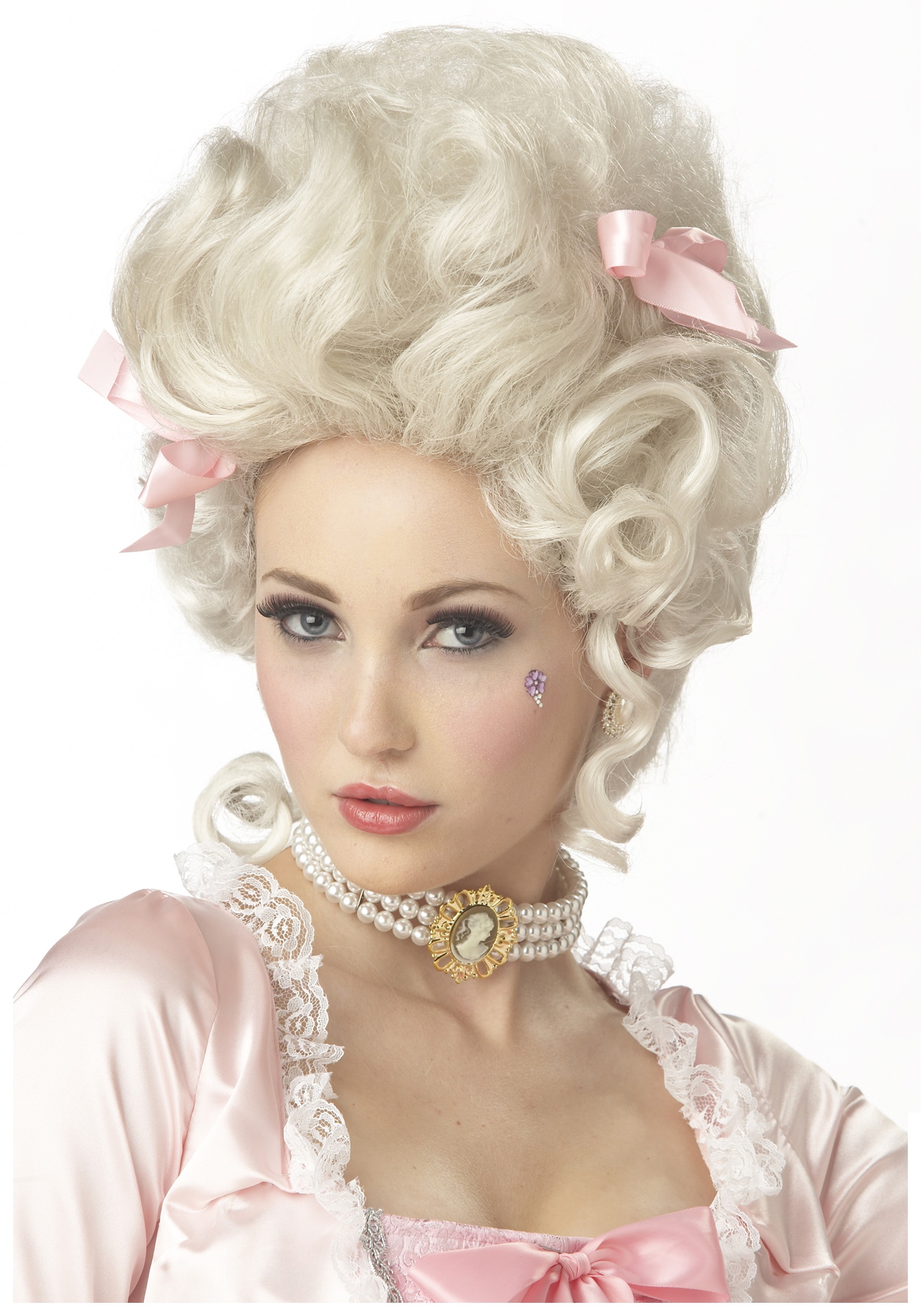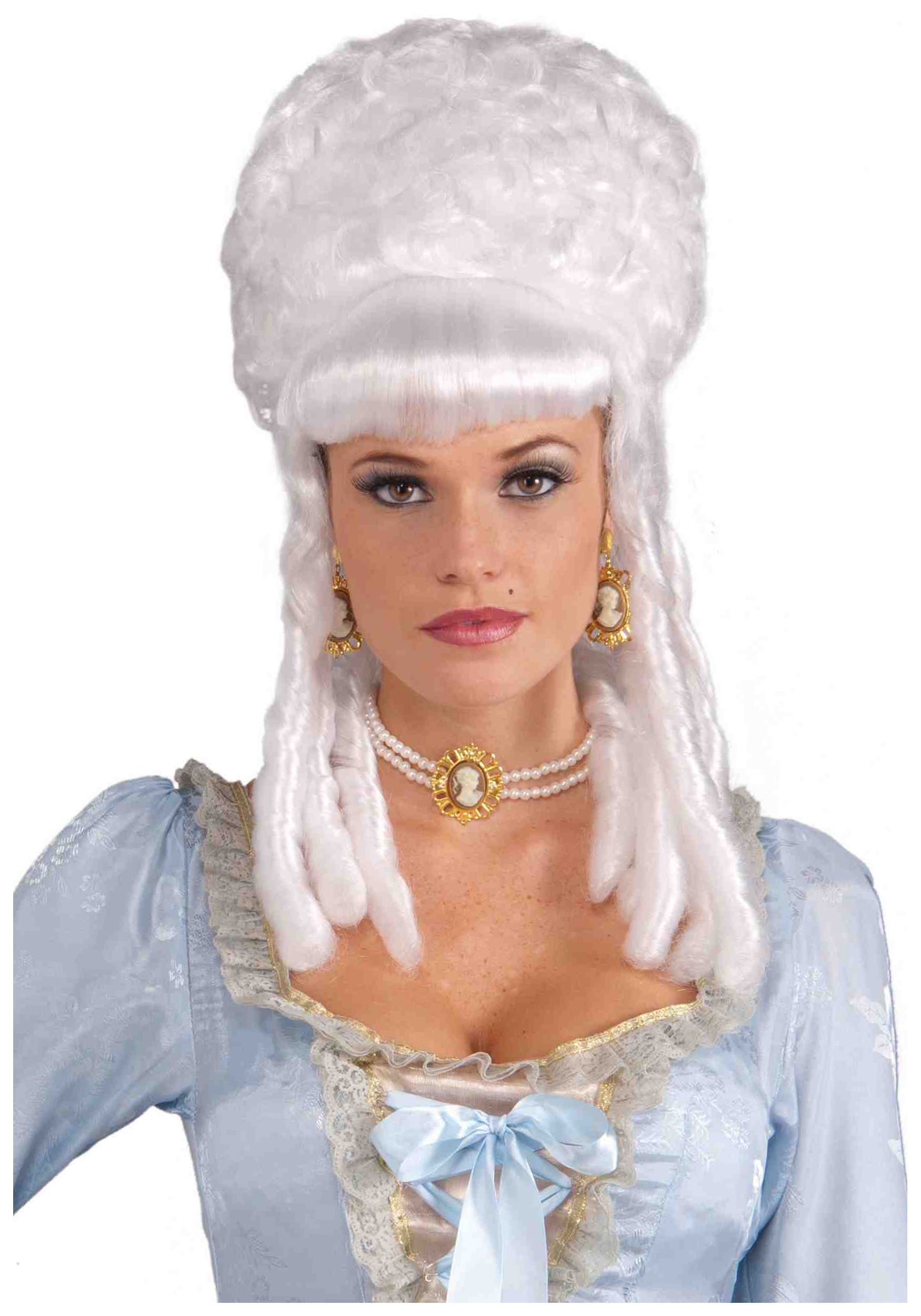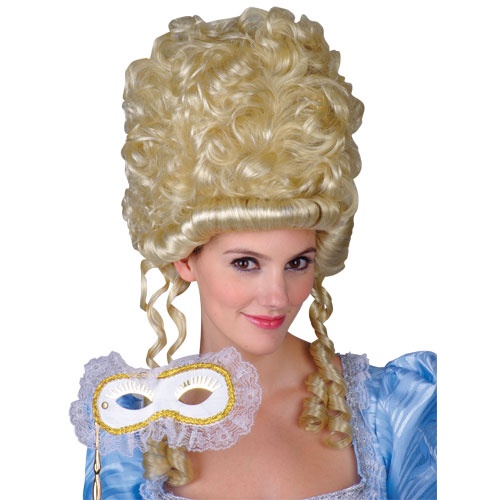Marie Antoinette Wig: The Iconic Hairstyles Of A Queen
Marie Antoinette wig has become synonymous with the extravagant and opulent style of the 18th century. This famous hairstyle reflects not only the personal style of the last queen of France but also the cultural and social dynamics of her time. As we delve into the fascinating world of Marie Antoinette's wigs, we will explore their history, significance, and how they have influenced modern fashion. In this article, we will uncover the secrets behind these iconic hairstyles, their elaborate designs, and the materials used to create them, providing a comprehensive understanding of their place in history.
The Marie Antoinette wig is more than just a fashion statement; it represents the grandeur and excesses of the French monarchy during a tumultuous period in history. Many aspects of her life, including her hairstyles, have been romanticized in literature and film, making her a captivating figure even in contemporary culture. Through this exploration, we will not only celebrate her unique style but also examine the societal implications of her lavish choices and the eventual consequences they bore. Join us as we unravel the story behind the Marie Antoinette wig and its lasting impact on fashion and culture.
In this article, we will break down various aspects of the Marie Antoinette wig, including its design, historical context, and its influence on modern hairstyles. We will also provide insights into how to recreate these styles and their significance in the realm of YMYL (Your Money or Your Life) content. With a focus on E-E-A-T (Expertise, Authoritativeness, Trustworthiness), we aim to provide valuable information supported by credible sources, ensuring that readers leave with a well-rounded understanding of this intriguing topic.
Read also:Drew Fuller A Comprehensive Look Into His Life And Career
Table of Contents
- History of Marie Antoinette's Wigs
- Design and Characteristics
- Materials Used in Marie Antoinette Wigs
- Cultural Significance of the Wigs
- Modern Influence of Marie Antoinette's Hairstyles
- How to Recreate Marie Antoinette's Wig Styles
- Famous Portrayals in Media
- Conclusion
History of Marie Antoinette's Wigs
The history of Marie Antoinette's wigs is deeply intertwined with the cultural and political climate of France in the 18th century. Born in 1755, Marie Antoinette became the queen consort of Louis XVI in 1770. Her arrival in France from Austria marked the beginning of a new era, not just for her but for French fashion as well. The extravagant wigs she wore became a symbol of her status and wealth, reflecting the opulence that characterized the French court during her reign.
Initially, wigs were introduced in France by King Louis XIII in the early 17th century as a means to cover baldness. However, by the time Marie Antoinette ascended to the throne, wigs had evolved into elaborate fashion statements. The queen's hairstyles often featured towering constructions adorned with feathers, flowers, and even miniature ships, showcasing the creativity and artistry of the period.
As the French Revolution approached, the extravagant nature of Marie Antoinette's wigs and overall style became a point of contention among the populace, who were struggling with poverty and inequality. Her hairstyles were seen as emblematic of the excesses of the monarchy, contributing to the negative perception of the royal family and ultimately leading to their downfall.
Design and Characteristics
Marie Antoinette's wigs were known for their grandiose designs that often defied gravity and traditional aesthetics. Here are some key characteristics of these iconic hairstyles:
- Height: Many of Marie Antoinette's wigs reached impressive heights, often standing several feet tall. This was achieved through a combination of padding and expertly styled hair.
- Ornamentation: Wigs were adorned with a variety of decorative elements, including feathers, jewelry, and even miniature scenes depicting life at court.
- Color: While many wigs were made from natural hair, they were often powdered white or gray to create a striking contrast with the dark clothing worn by many at the time.
- Structure: The wigs were carefully constructed with a base of natural hair or horsehair, layered with additional materials to create volume and shape.
The design of these wigs was not only a reflection of personal style but also a way to showcase wealth and status. The more elaborate the wig, the higher the social standing of the wearer.
Materials Used in Marie Antoinette Wigs
The materials used in creating Marie Antoinette's wigs were crucial to achieving the desired look. Below are some of the primary materials employed:
Read also:Alex Wagner A Trailblazer In Journalism And Broadcasting
- Human Hair: Many wigs were made from the hair of women, often sourced from the lower classes. This practice raised ethical concerns, as it exploited the impoverished.
- Horsehair: Horsehair was commonly used for its durability and ability to hold shape, making it an ideal material for constructing the base of wigs.
- Powder: Wigs were often powdered with talcum or flour to achieve a white appearance. This powder also helped absorb oils and keep the wig looking fresh.
- Embellishments: Beads, flowers, and feathers were often added to enhance the visual appeal of the wigs, reflecting the personality and status of the wearer.
The careful selection and combination of these materials allowed wig makers to create stunning and intricate designs that captivated the court and the public.
Cultural Significance of the Wigs
The cultural significance of Marie Antoinette's wigs extends beyond mere fashion; they symbolize the complexities of her reign and the societal changes occurring in France. The extravagant hairstyles became a focal point for criticism of the monarchy during the lead-up to the French Revolution. As the economic disparity between the nobility and the common people grew, so did resentment toward the royal family.
Marie Antoinette's wigs represented the excesses of the court and served as a stark contrast to the struggles faced by the masses. They became a symbol of the disconnect between the royal family and the people, contributing to the narrative that ultimately led to the queen's downfall.
In a broader context, these wigs have been referenced in various forms of art and literature, showcasing their lasting impact on popular culture. They serve as a reminder of the extravagant lifestyle of the monarchy and the consequences of such excess in times of hardship.
Modern Influence of Marie Antoinette's Hairstyles
The influence of Marie Antoinette's hairstyles can still be seen in modern fashion and popular culture. Designers and stylists often draw inspiration from her iconic wigs to create looks that embody a sense of drama and opulence. Here are a few ways her hairstyles have impacted contemporary styles:
- Runway Fashion: High-fashion designers frequently incorporate elements of Marie Antoinette's hairstyles into their collections, showcasing exaggerated shapes and ornate decorations.
- Costume Design: Films and theatrical productions set in the 18th century often feature wigs inspired by Marie Antoinette, emphasizing their historical significance.
- Social Media Trends: Platforms like Instagram and TikTok have seen a resurgence in interest for vintage hairstyles, with many influencers recreating looks reminiscent of the queen's iconic styles.
The enduring fascination with Marie Antoinette's wigs speaks to the timeless nature of fashion and the ways in which history continues to influence contemporary trends.
How to Recreate Marie Antoinette's Wig Styles
For those interested in recreating the iconic styles of Marie Antoinette, here are some steps and tips to achieve a similar look:
1. Gather Materials
You'll need:
- A base wig (preferably in a light color)
- Hair extensions or padding for volume
- Hair gel or spray for hold
- Decorative elements (feathers, flowers, jewels)
- Wig cap and netting
2. Create Volume
Start by teasing the hair at the crown of the wig to create height. Use hair extensions or padding to add extra volume and shape.
3. Style and Secure
Use hair gel or spray to secure the shape of the wig. Carefully arrange the hair to mimic the elaborate designs typical of Marie Antoinette's hairstyles.
4. Add Embellishments
Article Recommendations


